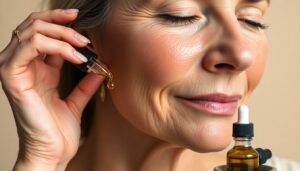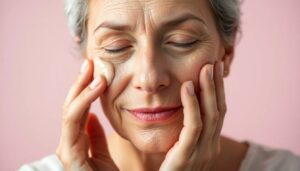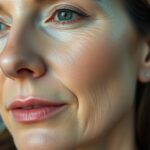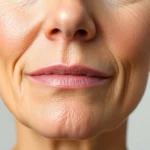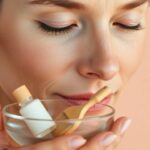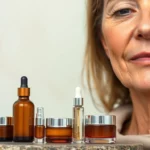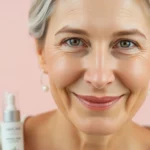Want to look younger? Who doesn’t! Facial serums can help slow the signs of aging, such as wrinkles, fine lines, and dryness. With their potent formulas, serums target these issues effectively. This guide will help you find the best serum for your skin.
Why Does Skin Age?
Aging skin undergoes changes due to a combination of genetics and environmental factors. Understanding these changes can help you choose the right skincare products.
The Science of Skin Aging
Skin aging occurs due to intrinsic (genetic) and extrinsic (environmental) factors. Sun exposure, pollution, and smoking damage collagen and elastin, which keep skin firm. Reduced cell turnover and oxidative stress lead to sagging, wrinkles, and age spots.
Common Signs of Aging Skin
Common signs include wrinkles, fine lines, age spots, dryness, and uneven skin tone. These changes indicate it’s time to update your skincare routine.
Key Ingredients to Look For
Certain ingredients are proven to combat aging. Look for these on product labels:
- Retinoids (Retinol, Retinaldehyde, Tretinoin): Boost collagen production and cell turnover.
- Vitamin C: Brightens skin and protects against environmental damage.
- Hyaluronic Acid: Hydrates and plumps the skin.
- Peptides: Stimulate collagen production for firmer skin.
- Niacinamide (Vitamin B3): Reduces redness, minimizes pores, and strengthens the skin barrier.
How Anti-Aging Ingredients Work
Let’s dive deeper into how these ingredients benefit your skin.
Retinoids
Retinoids like retinol and tretinoin stimulate collagen production, reducing wrinkles and increasing cell turnover. Start slowly to avoid irritation and always use sunscreen.
Vitamin C
Vitamin C is an antioxidant that brightens skin, evens tone, and supports collagen production. Look for stable forms like L-ascorbic acid.
Hyaluronic Acid
Hyaluronic acid attracts moisture to the skin, hydrating and plumping it to reduce fine lines.
Peptides
Peptides signal the skin to produce more collagen, improving firmness and elasticity. Matrixyl is a popular peptide for collagen stimulation.
Niacinamide
Niacinamide improves skin texture, reduces redness, and strengthens the skin barrier, making it a versatile ingredient.
Choosing the Right Serum for Your Skin Type
Selecting the right serum depends on your skin type and concerns. Here’s how to choose:
Know Your Skin Type
Identify whether your skin is dry, oily, combination, or sensitive. Dry skin feels tight and flaky, oily skin appears shiny, combination skin has both oily and dry areas, and sensitive skin reacts easily.
Target Ingredients for Your Concerns
Choose ingredients based on your primary concerns. For wrinkles, use retinoids. For dark spots, opt for vitamin C. For dryness, hyaluronic acid is essential.
Read Labels and Understand Concentrations
Ingredients are listed from highest to lowest concentration. Higher concentrations are more effective but can be irritating. Start with lower concentrations and gradually increase.
How to Incorporate Anti-Aging Serums into Your Skincare Routine
Adding a serum to your routine is simple, but proper application is key.
When and How to Apply Serum
Apply serum after cleansing and toning, before moisturizer. Gently pat it into your skin—don’t rub. Use it morning or night, depending on the serum.
Layering Serums and Other Products
You can layer serums, but avoid combining vitamin C and retinoids. Some ingredients don’t mix well, so space them out.
Patch Test and Introduce Slowly
Always patch test new serums on your neck or arm. Wait 24 hours to check for reactions. Introduce new serums gradually to avoid irritation.
Conclusion
Choosing the right anti-aging serum can transform your skin. Understand your skin type, identify the best ingredients, and apply them correctly. With consistency, you’ll achieve firmer, youthful, and radiant skin. Start your journey today!


